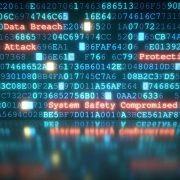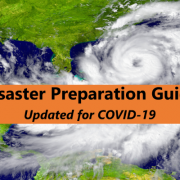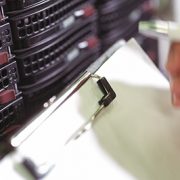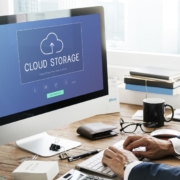Business Lessons From Hurricane Sandy
Hurricane Sandy was a storm of epic proportions, wreaking havoc upon the entire northeast. As long as I live, I’ll never forget the devastation I saw firsthand in my own Rockland County, NY as well as the pictures and stories on TV showing widespread destruction in New York, New Jersey, and Connecticut. Property can eventually be replaced but people cannot. Our hearts go out to those families who lost loved ones as a consequence of this Super Storm.
In addition to the personal hardships, businesses greatly suffered. Many have still not reopened as a result of Hurricane Sandy’s wrath. Others are slowly but surely emerging hoping to quicken the pace of recovery and get back to normal. However, we all need to understand that things will never be the same again. The weather patterns are clearly changing. What happened once can happen again.
Make no mistake — we will pick ourselves up and thrive once more, but we must take this opportunity to heed the lessons, as hard as they are, that Super Storm Sandy taught us. Some of these lessons are:
Always put people first
- The safety of your employees is paramount and nothing you do should compromise their safety. Things can be replaced, people cannot be replaced. The lessons below suppose that we have advanced warning such as the case with Super Storm Sandy. If a storm or other crisis suddenly comes upon you, take care of your people first.
Pre-storm preparation:
- Make sure all data has been backed up and snapshots taken of the servers prior to the storm. This will make it much easier to restore the latest information if PCs and servers are damaged.
- Employee and client contact information should be up-to-date and available to management either in the Cloud, hard copy, or both.
- Employees should have contact information for their immediate supervisors so they can communicate during and after the storm.
- You should send a mass email to all clients giving them various ways to get company information and service updates (i.e. cell phone numbers, emails, websites, blogs, social media accounts, etc.).
- All workstations should be shut down prior to the storm. If your location is prone to flooding, then disconnect the hardware and place them high up (i.e. on counters, etc.) or preferably on an upper floor if possible.
- Non-mission critical servers should also be shut down in advance of the storm if possible. Mission-critical servers, if needed to be kept on, must be connected to powerful Uninterruptable Power Supply (UPS) units that have been previously tested for proper operation. These UPS units should have the capability to gracefully and properly shut down the server without human intervention should a power failure occur.
- Make sure you have a smart phone with a data plan. More on this below.
Communications:
- As stated above, all companies should have various ways for clients and employees to get updates. For instance, what comes to mind immediately is using the power of Google. You can easily set up a Google website, blog, or Group with participation limited to employees and/or clients. Prior to the storm, you should advise employees and clients to use these facilities as a way of getting important information. During Hurricane Sandy, Google was up and running. It is almost inconceivable to think that Google, with its distributed server infrastructure, would go down for any reason.
- Social Media can also be an excellent way to let people know what is going on and to interact with employees and clients. Twitter is especially suited for this. Google+ is also an excellent medium with its Chat and Hangout capabilities.
- Employees and clients should have an alternate email address, separate from their company emails, that can be used for emergency communications should your servers become inoperable for an extended period of time. Public email addresses take minutes to set up and are free. Gmail comes immediately to mind.
- Consider using Hosted Exchange for your company email, placing this service in the Cloud and separating it from your onsite server configuration. This Hybrid Cloud Solution will allow your email to continue to function even if your onsite servers are shut down or damaged. You and your employees can continue to communicate with each other and to clients from any other location with internet connectivity.
- Communicate, communicate, and then communicate some more. Call your customers prior to, during (if possible) and after the storm to see how they are doing and offer assistance. During Hurricane Sandy, I communicated with customers throughout the crisis via cell phone, texting, and email. However, I can also tell you that I honestly feel that I didn’t communicate enough.
Get a smart phone with a data plan:
- During Hurricane Sandy, many people and businesses lost internet connectivity. While you cannot run a whole business infrastructure from a smart phone, you can use it to tether or create a hotspot giving you internet access while your ISP works to restore internet service.For example, we had a client who was told by his ISP that he may be down for an extended period of time. His business depends on Cloud services only accessible through the internet. So, we moved his workstation that had access to this service to our office and brought the machine online segmented from our network. Our client created a WiFi hotspot using his smart phone and logged into the workstation at XSolutions from his laptop. This setup helped him service his customers and maintain business-as-usual. His internet was restored 11 days later!Using your smart phone as a WiFi hotspot, can give you internet capabilities and allow you to continue doing business until internet service is restored. This certainly is not the ideal situation and may be costly, but it is an alternative for emergencies such as this.
If you haven’t already done so, create a Backup/Disaster Recovery (BDR) Plan:
- XSolutions has written a number of articles on this subject and we plan to write a lot more because a BDR Plan is vital to your company’s continued existence. Now that we’ve seen what a natural disaster such as Hurricane Sandy can do to such a large area of our country, don’t you think it is time to prepare for the next Super Storm? Don’t be a statistic; be prepared and make sure that Business Continuity is a central component of your BDR plan.
- Here are the links to our current Backup/Disaster Planning articles:
- Every Business Needs An IT Backup/Disaster Recovery Plan
- The Weakest Link in IT Security
- Your Business Needs A Records Management Program
- Establish An Emergency Operations Center
- Subscribe to the Disaster Recovery Journal. It’s free and the information it contains is superb.
As stated in the beginning of this article, the weather patterns for our geographical area are changing. We have had two hurricanes in the last two years and a Nor’easter right on the heels of Super Storm Sandy.
Disaster can strike at any time and can be either man-made or natural. We need to be prepared in order to carry on. Advanced planning is the key. Don’t hesitate, start planning now.










